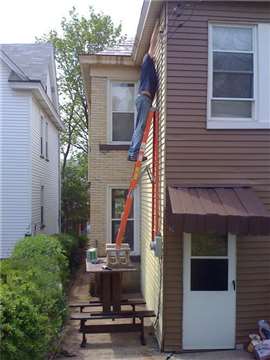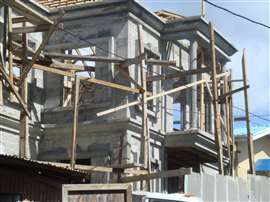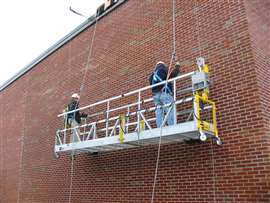The case for overlooking scaffolds
January 14, 2025
Have you ever noticed that scaffolds are frequently overlooked? It seems that the only time they are noticed is when they fall over, collapse or otherwise disturb the natural order of life. Rare is the time that scaffolds are given the credit they are due. And that is strange since any project more than 8 feet above the ground requires some sort of means to reach work areas at heights.

Think about it, any structure more than 8 feet tall requires workers getting off the ground, whether by using stilts, ladders, scaffolding, or makeshift devices. And, since the equipment is rarely part of the final structure, it is temporary and removed when it is not needed any more.

And therein occurs the problem. Since the equipment is considered inconsequential to the final structure, it isn’t worth recognizing. In fact, architects and engineers discount its importance by claiming that the temporary equipment is part of the means and methods, not worthy of consideration. Consequently, the scaffold is the responsibility of the contractor, and again, who like the engineer and architect, considers it a temporary piece of equipment and more of a nuisance than a necessity.
When reading articles in technical magazines, I always find some amusement, but mostly annoyance, with the authors who speak glowingly about the subject building, the clever design, the beauty of the design and how the engineers and architects overcame some supposed unique aspect that required great skill and expertise to solve. Photographs are included that reinforce the telling of the story and often the photos will include scaffolding.
Assembling structures
You would think it would be mentioned but then it is considered means and methods, and therefore not relevant to the telling of the story. Never mind that the scaffold is as complicated as the structure being built. The building is constructed with big steel beams while the scaffold, which is just as tall as the building, is constructed of tubes no more than 2 inches in diameter. Maybe that is why scaffolding is never noticed. Frankly, that is an engineering feat more worthy of discussion than the assembly of some steel beams.
These articles of which I speak often include photos of the design team, proudly standing at the project, always with clean hardhats and clothing. Obviously, they are not the ones building the structure. Every now and then photos are included that show iron workers hustling the steel or making the connections. What about the scaffold erectors?
Nobody includes pictures of scaffold erectors assembling the rigging on the roof of a 50 story building so a scaffold platform can be hung from it. Nobody acknowledges the work of an erector who has to handle hundreds of components in adverse weather conditions while maintaining an often impossible time schedule because the contractor forgot all about the scaffold and its necessity in constructing the building.
Failure to recognize
Although infrequent, every now and then a scaffold project is recognized in technical literature. These articles are typically written by the engineer who was involved with the building or structure for which the scaffold was used. Furthermore, the reason why the scaffold is discussed is because the structure required analysis to accommodate the scaffold loads that were applied to the structure. If not for that, the scaffold would most likely have been ignored.

While correctly designed and erected scaffolds are normally unnoticed, such is not the case for those scaffolds that fail to meet the industry accepted standards. That’s the fancy way of saying those scaffolds where the designers and erectors have no clue as to what a correct scaffold is. Some of the best news coverage is of suspended scaffolds, typically two point suspended scaffolds commonly seen on high rise buildings.
There’s nothing more newsworthy than a couple of guys (always seems to be men, not women) hanging by their fall protection while the fire department tries to figure out how to retrieve them after the scaffold suspension ropes have failed. Better yet is when the rigging falls off the roof. That makes great video. Unfortunately that kind of news coverage obliterates any type of rare positive coverage that the industry might receive. Mention scaffolding to the average woman on the street and the first thing you hear is how dangerous scaffolding is.
I have no idea what can be done to remedy the bad press or lack of press. Well, one thing that can be done is ensure scaffolds don’t fall down so there is no bad press. Perhaps bragging about the work you do would help. Just a suggestion. While scaffolds may be unnoticed, they aren’t going away as long as structures are more than one story tall. Perhaps when it is decided all structures are less than 8 feet tall, scaffold will be noticed. Just saying.
STAY CONNECTED



Receive the information you need when you need it through our world-leading magazines, newsletters and daily briefings.
CONNECT WITH THE TEAM







